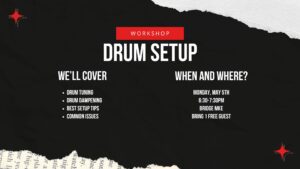Drums are a tricky instrument. They come in so many forms and shapes. Every drummer will have their own preference on what configurations they use and it can be tough to know where to start. In this article, we’re aiming to look at some popular setup tips as well as popular configurations of shells and cymbals so you can decide what’s best for you.
Basic Setup Tips
Drum Spacing and Height
Getting these setup tips right early in your drumming can really help save you a lot of headache and develop some good habits early. It starts with your drum throne (the seat). You need to set it so your knees are just slightly below your pelvis/hips. If your knees are too high or too low, you won’t be able to get great leverage on the kick drum.
Once you’ve got your throne height set, you need to get your snare height set. Your top snare head should be just about even if not maybe slightly higher than the tops of your thighs. Too high here will cause you to have troubles separating your hi-hat hand and snare hand. Too low will give you issues with accuracy, rimshots, and controlling rebound.
Next comes the tom spacing and height. Your toms should need to be close enough that you’re not extending your elbow all the way. There should always be a little bit of elbow bend when reaching for your toms. If your toms are too close, your elbows will be bumping into your torso or legs. Find the balance so you’re not fully extended but also not crunched together.

Your hi-hat should be set at a height that allows your snare hand to easily get under your primary hand. The rest of your cymbals should see you a bit more extended just beyond your toms. We still don’t want to be one hundred percent extended but we can be pretty close.
Drum Angles
Beginner drummers may be tempted to set the angle of their toms and snare very steep. This is usually to compensate for either bad form or other bad setup practices. Unfortunately though, setting up like this has negative consequences. The snare being so deeply angled removes certain techniques and dynamics that will be necessary as they advance such as rimshots and ghost notes. Having the toms with such a steep angle also takes away from the overall tone and resonance of the drum. Angling the drums means the top and bottom heads can’t resonate as freely and will change the way your drum sounds. The overall recommendation is to keep your snare and toms as close to flat as possible to promote could technique and tone.
Hi-Hat Setup
The hi-hat can be one of the most dynamic instruments and therefore requires a bit of attention at setup. Understanding where to set the clutch (top hat height) is crucial. But what a lot of beginner drummers don’t know is that there is a knob that goes underneath the bottom hat that sets it to an angle. The angle of the bottom hat effects how the two hats will ring together when open and creates a more dynamic sound. Spend time finding the right combination when it comes to your top hat open height and your bottom hats angle to achieve the sound and feel you want.
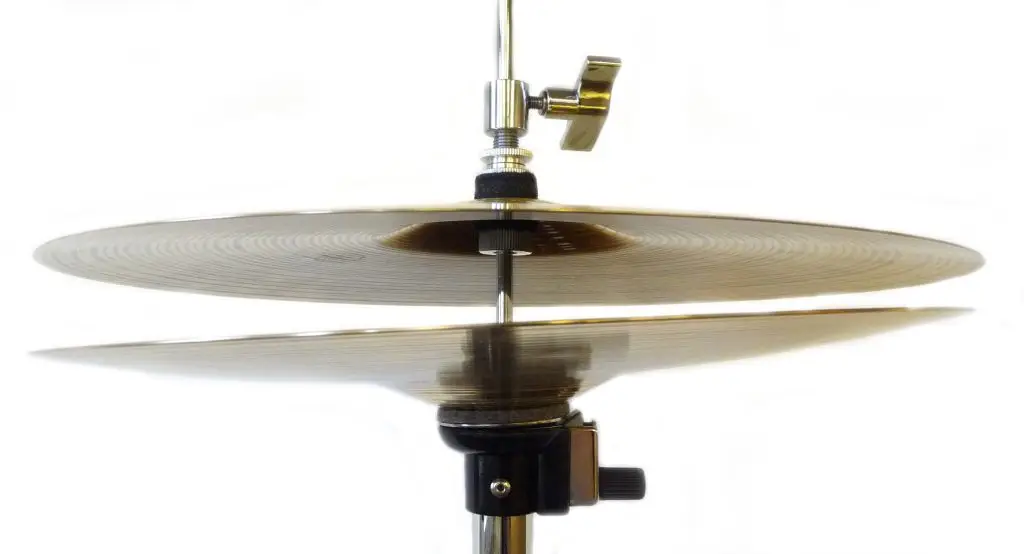
Ride Position
The ride cymbal has seen a lot of variation when it comes to position and angle. Generally speaking, you should try and keep it more on the flat side to allow you some good hits on the bell. If you think you’ll need to hit the edge on it a bit more you can increase the distance between you and the ride or you can raise the height.
How far you move it to the right or left may also come down to your tom configuration. There are options for moving it that we’ll cover later in this article depending on what toms you have.
Kick Drum Pedal Tension
On your kick drum pedal will be a spring that controls the tension of the kick drum. This spring can be adjusted to either increase or decrease the tension requiring more or less weight from your leg to push the beater from the kick drum pedal down.
Training your muscles to control the bounce back of your drums is very important. In my early days as a drummer, I didn’t have a lot of control on the kick drum and therefore, I would set the tension of the kick pedal very low. As time went on though, I grew (both physically and in my talent as a drummer) and slowly began increasing the tension in my kick drum pedal. This is because I now understand how to use that force that comes back at me to play faster and easier.
This setting can be hard to give a definitive recommendation on since it’s somewhat subjective to the overall weight and strength of the person using it. However, I’d recommend that as you progress in your playing, try slowly but surely increasing the tension on that kick drum pedal so you can utilize it’s push back power to help you play faster passages.
Setup Configurations
In this section, we’re going to talk about overall drum configurations. Each one of these offers different advantages and disadvantages are are ultimately up to the discretion of the drummer and their personal preferences. This is by no means a list of every setup possible. Just a few of the more common setups I see. Let’s start by talking about tom configurations.
Five Piece Kit - Standard Setup
This is probably the most common setup I see and likely the first setup you think of when picturing a drum set. You have five shells in total. A kick drum, a snare, two rack toms, and a floor tom. The tom sizes can vary depending on your style. The two most common size combos are 10 inch rack, 12 inch rack, 14 inch floor or 12 inch rack, 13 inch rack, 16 inch floor.This is a very balanced setup and is where many drummers start.
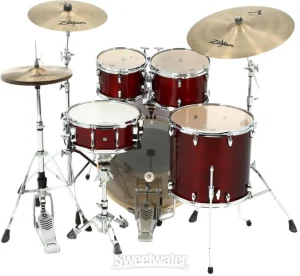
Four Piece Kit - Simplified Setup
This configuration removes one of the rack toms leaving us with just four shells (kick drum, snare, rack tom, and floor tom). While the removal of a rack tom gives us one less shell, the advantage is the placement of the ride which can be moved forward to where the second rack tom previously was. You also have more possibilities when it comes to the ride height, distance, and angle which some drummers really enjoy. Common tom sizes are 10 inch rack and 14 inch floor or 12 inch rack and 16 inch floor.
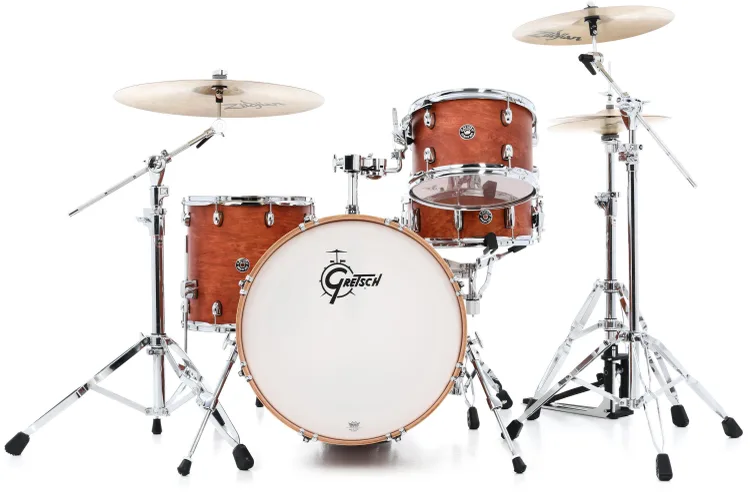
Five Piece Kit - Double Floor Tom
This has been my favorite configuration for a long time. This essentially the four piece kit plus an additional floor tom. You still get to put that ride in the second tom floor location. Your second floor tom can be as low as 18 inches depending on what your first two toms are.
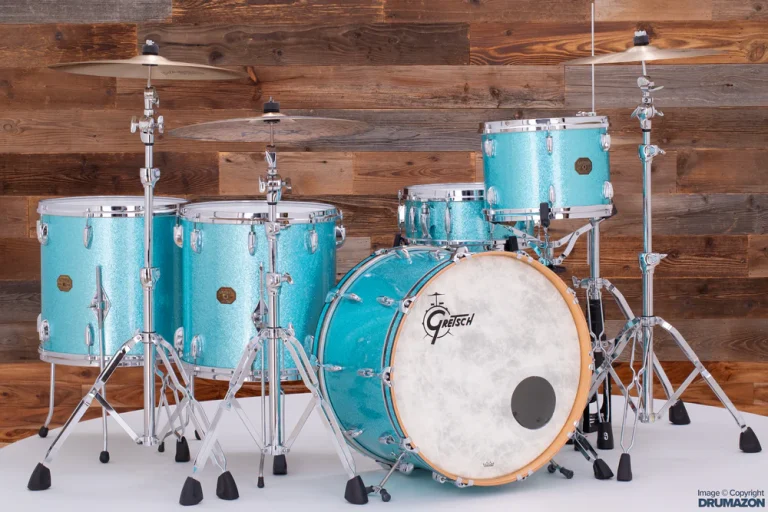
Six Piece Kit - Double Rack, Double Floor
Take the standard setup and add a floor tom. For those who like lots of versatility or extended tom runs in their fills. Tom sizes can vary a lot and depend on style and personal preference.
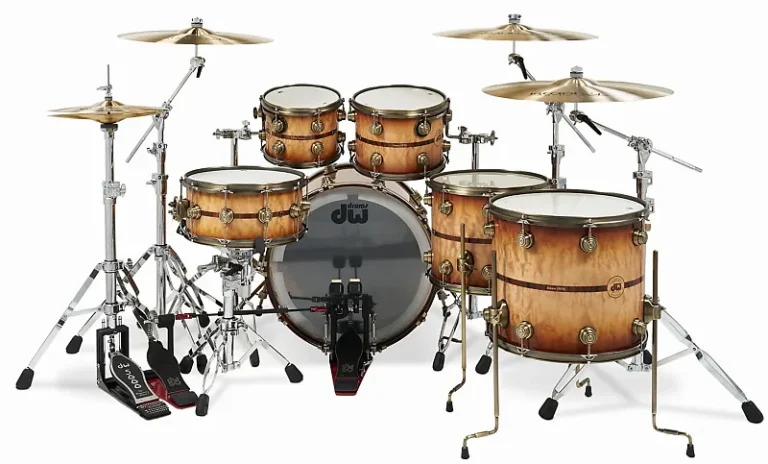
Seven Pieces and Beyond....
Seven pieces usually start to bring additional rack toms adding more rack toms may force the drummer to change the placement of other key pieces such as the hi-hat. There is no limit as to how many drums you can add beyond here. It’s really just a matter of how crazy do you want to go and where do you stop. My only caution is that having more drums does not make you a better drummer. A good drummer knows how to make the most out of the minimal number of pieces and everything else is just frosting on the cake. That being said, I totally understand the joy of having a kit that almost literally surrounds you so who am I to stop anyone. Just do what inspires you to keep playing!
Cymbal Additions
More Crashes
While only one crash may work for some drummers, many drummers enjoy having two or even more crash cymbals on their kit. Every crash sounds unique and there are so many different combinations of sizes, materials, and construction that it’s overwhelming how many options are in front of you. I would personally be satisfied with two but I can definitely see arguments for more.
Splash Cymbals
Splash cymbals are effectively just miniature crash cymbals. They are usually 12″ or smaller and produce a much smaller sound. They can be great for adding light accents and provide a unique feel to a set that no other cymbal quite matches.
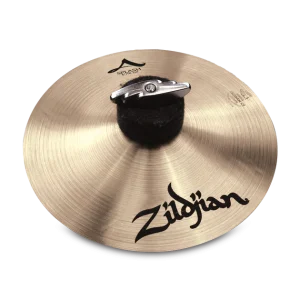
China Cymbals
A china cymbal is a cymbal like no other. It has a very distinct sound as well as a distinct look. It almost looks like a crash cymbal somebody tried to pop inside out. China’s are very popular in metal music for their brash sound that makes it stand out. However, many styles of rock also enjoy using this cymbal. They very wildly in size and can even change in sound depending on what direction you hit it from or what way you hang it.
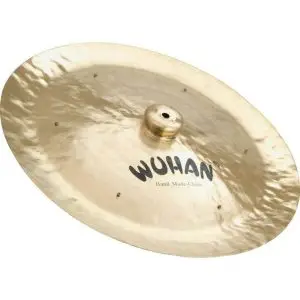
Double Kick
Back in the day, if you wanted to play the kick twice as fast your best option was to have two kick drums. While this look is very cool on stage, it’s also a lot of gear to try and move. Today, most drummers prefer a double kick pedal. This give you two drum beaters that can hit on one kick drum. You don’t need two kick drums anymore plus you have more flexibility with the position of the second kick drum pedal which allows you a more convenient hi-hat pedal position.
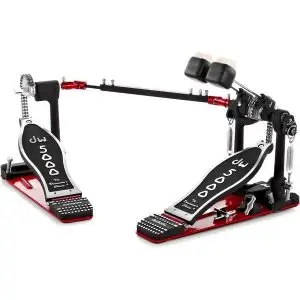
Just Scratching The Surface
While these additions and configurations are just the beginning, I would say that for the vast majority of drummers it covers the possibilities you’d want in a drum set. I hope these configurations and setup tips helped you understand all the potential you have when it comes to getting your drums set up the way you want them to.
Other Posts

Rhythm Guitar Mastery: Strumming and Riff Techniques for Pop and Country

